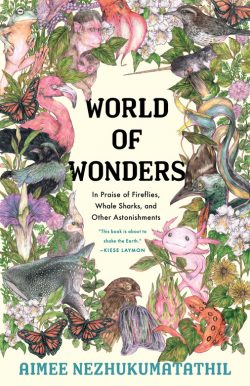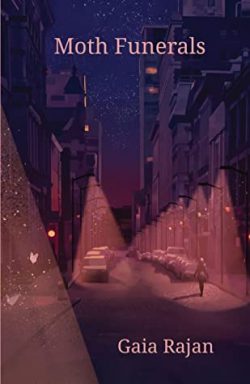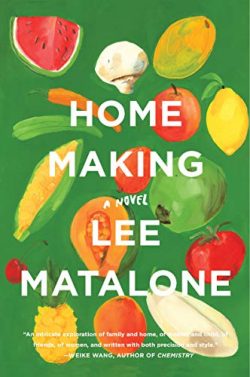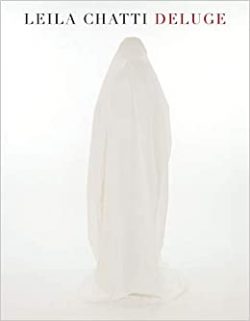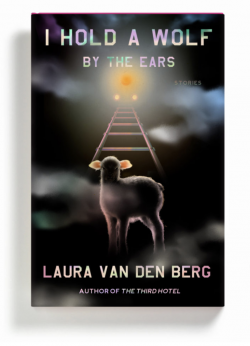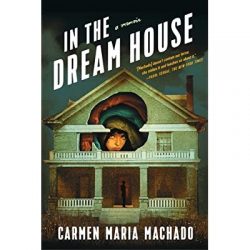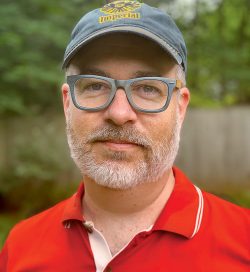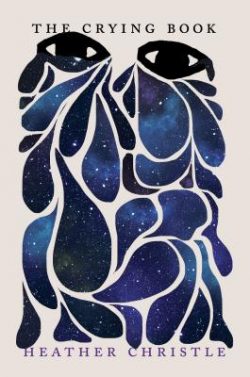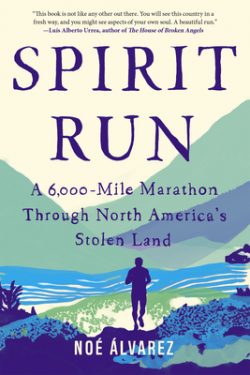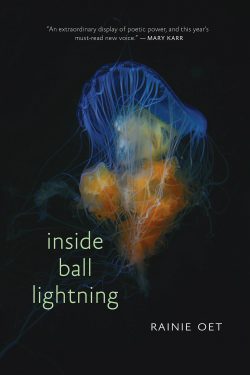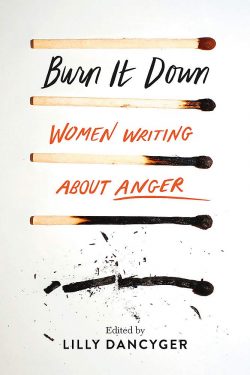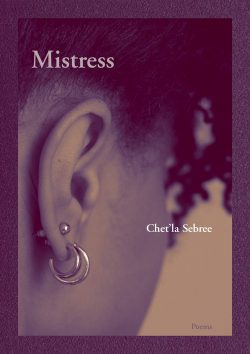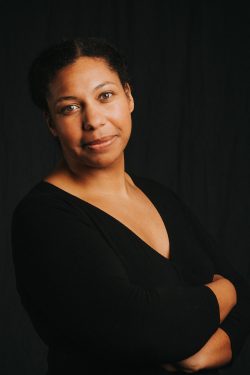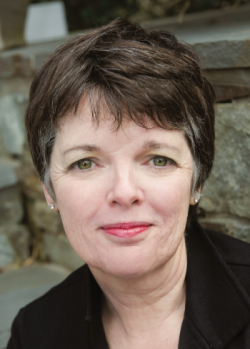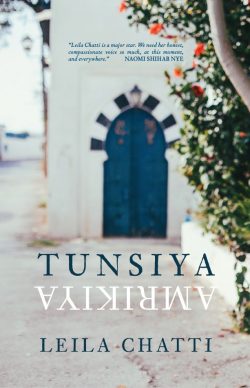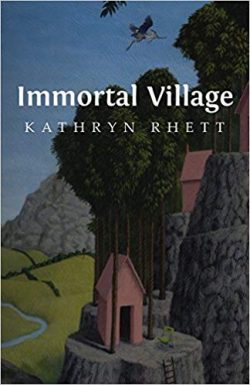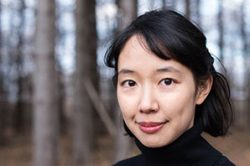Before joining the Department of English at Virginia Commonwealth University, Lina María Ferreira Cabeza-Vanegas was a visiting professor at The Ohio State University, where she advised Cade Leebron’s MFA thesis. Now, Lina lives in Richmond and Cade is still in Columbus, and sometimes they text. In February, Lina—author of the essay collection Don’t Come Back and 2016 recipient of the Rona Jaffe Writer’s Award—returned to Ohio State as a visiting writer. Lina and Cade spoke in-depth about writing and translation, carnivorous household plants, and much more.
Lina María Ferreira Cabeza-Vanegas: I interviewed Ian Frazier once, did I tell you this?
Cade Leebron: No. Did you? Maybe.
LF: I was just this little nothing kid and I had a list of serious questions, like what’s it like being a New Yorker writer, and what’s the environment? The best question I asked him was, what’s your favorite color? Because he knew immediately. I don’t remember any other answers, but that he knew the answer to immediately. And I said, why do you know? He said because when you have kids, the things that become important are constantly asked to shift a little bit.
People talk about having kids and how your world changes. This moment makes me understand that better. You need to know your favorite color. I remember as a child asking people, what’s your favorite number? Now I have no concept of what that was about.
CL: I had that question, too. And “what’s your favorite color.” Favorites are important.
LF: I like red and I like black; I like high contrast and I like clean lines and I don’t like rounded edges and things that I can’t very easily clean.
CL: What’s your favorite animal?
LF: I could not pick. I actually fall in love with animals very frequently because I’m writing this novel about the devil, which means that I have two shelves worth of maps of the Amazon jungle. My devil lives in the jungle. There was a lot of me considering where Eden might have actually been, like the concept of biodiversity—like where is the beginning of life, the highest intensity of life. I thought I might know about the jungle and then realized I don’t, I’m from the Andes. I know what it’s like to get altitude sickness. That’s the thing that I know best and nothing else. So, I had to go to the jungle recently and spend a week there. It was fascinating.
CL: Is that when you were interviewing witches, and you emailed me from an airport?
LF: I spend a lot of time in airports.
CL: We were emailing about guinea pigs.
LF: I recently nearly purchased a guinea pig because they were essential in exorcisms.
CL: So, a guinea pig to kill?
LF: Well, if you are with bad air, or heavy air as one would say, then the guinea pig will die. If you are without, then the guinea pig will be fine. I called PetSmart and was like, can I get an all-black guinea pig? I was writing this essay about this exorcism—well, it’s not quite an exorcism. It’s the reverse of an exorcism. So this kid lost his soul. He just misplaced it for a while, and it made him very sick because bodies are not meant to live without spirits, is what I’ve been told.
I started writing this, I was in Richmond, and then I realized I don’t remember ever holding a guinea pig. If I did, it was as a child. I think I ate one as a child as well. So, I went to PetSmart to hold one. They’re adorable. They’ve been domesticated for 7,000 years—I saw their wild cousins, they’re far more rodent-like—and there has been a natural selection for the most rotund version of this animal. So, they’re basically spherical. And they’re delicious, I’m told.
So, I like the guinea pig. There are some snakes that are just phenomenal. And the black caiman is an amazing creature, it pre-dates us. I have a carnivorous plant that is the loveliest thing in the world. It’s a pitcher plant.
CL: What do you feed it?
LF: Here’s the thing—your house is full of insects regardless of what you do. So, you just let them eat that. Venus flytraps are a little bit more finicky and require live things, or you just don’t feed them, and they grow a little bit slower. That’s fine, too.
My favorite animal? No idea. I really like the condor. When I talk to people, I start complaining about how hideous it is, but it’s a farce. I’m from a place, Bogota, that is in Cundinamarca, the land of condors. And I have a fondness for this hideous being that can fly so high. I feel pretty confident about the condor. I have a lot of animals I really like. Oh, the potoo is fantastic. I will show you. You will enjoy this potoo. Everyone should have a picture of the potoo. It has the most hideous call.
In Colombian Spanish, in the slang, they call it a bird in good standing. El bienparado. And they sleep all day, and there’s so many pictures of it where you see the slit of the eye going like, are you still taking my picture? And it just closes and goes like, fuck that, I’m just staying here because I don’t care. In Colombia we call them pajara estaco or bienparado, so a bird in good standing, or a stake bird. Took like an hour to find one; I was dead set on finding one. It’s so much of the eye of the beholder on it. I like any culture that can appreciate a bird like that.
CL: Wait, I need to ask you real questions. I was reading your essays and thinking about something you said to me last year, that people who appropriate other people’s stories in nonfiction do so because their own lives aren’t interesting.
LF: Oh, did I say that?
CL: Yes. It was my favorite thing! But I was thinking about that while reading your essays, because a lot of your essays are telling stories of other people, but they don’t feel appropriative. How do you navigate that?
LF: I think that probably goes back to the definition of what appropriation is. And I write nonfiction. Nonfiction is a little bit harder to appropriate, if you’re transparent. If I told you about the time I lost my soul and a witch got it back via guinea pig, like that would be straight up appropriation. But that’s not my intention. I think my life is probably pretty uninteresting, but the people I talk to are really interesting.
A thing that I do remember saying is the worst lies come from vanity. I think that’s probably where appropriation comes from as well. Shallow people tell bad stories because they walk into a room and they can tell you things about themselves in the room. I was interviewing someone recently, and she could tell me what she was wearing and what she was thinking and how she felt. And then I said, so how big is the room? Because these are the details you absolutely need when you start writing. Where are the exits? How many people were there? Is there a carpet? When you speak, would there be an echo? I want to be able to write, “When she speaks, it echoes across a hallway.”
She couldn’t tell me a single thing about anyone else but her in the room, and I was so frustrated. Everyone’s an unreliable narrator, but most people try not to be. And this person was just like, I am the center of all things, why do you need to know anything else? I’m like, okay, if I keep following the story, the best thing I can do is write about your organs. That’s as much interiority as I’m going to get.
I tell other people’s stories because I love these people, and they’re so frequently overlooked, and I hate that. A lot of my projects come out of sheer rage. I dislike the notion that we don’t have good stories, we don’t have literature, we don’t have art. We are, you know, either rapists or starving children, nothing in between. I think that’s where we exist for so many people. And just because the story of this boy misplacing his soul doesn’t fit your idea of literature, it doesn’t sound like a sonnet, doesn’t mean it isn’t absolutely beautiful. I’m hoping that by bringing the stories of these people I love and culture I love, the beauty of it, I’ll be able to at least put a dent in the dehumanizing forces of the world. How much has been done to take that away from us? We don’t need permission to be human. We are, and we don’t need permission to make art. We have, and we have been, and we will, and it’s going to outlive any notion that we can’t.
CL: Do you feel like your poetry translation project, 100 Refutations, was also inspired by rage?
LF: Oh god, yeah. But it’s not just rage, it’s grief. I was talking to a former classmate of yours yesterday about struggling to write more of the joy. How do you write more essays with joy, especially when you deal with subjects like this, loss and war and devastation.
I keep going back to Ursula K. Le Guin. I’m going to botch the quote—get the quote right. [“This is the treason of the artist: a refusal to admit the banality of evil and the terrible boredom of pain. If you can’t lick ’em, join ’em. If it hurts, repeat it.”] It’s from The Ones Who Walk Away from Omelas. I don’t want to join those ranks, obviously, but I do write sad, angry books. But I don’t think that’s all of it. And I don’t think that’s the intention. The joy is present. It has to be. It’s the loss of joy that hurts. That’s the emptiness of certain literature, where you don’t understand the stakes because everything is terrible. Everyone is terrible. No one is worth saving. The recognition that there is something worth saving is what deepens the grief, but it’s also a celebration.
I understand that with 100 Refutations, at least the essays are going to feel pretty angry. But I love the poetry. And I write a lot about women because they’re very frequently the ones who are overlooked; especially in a country that has been at war for so many years, they’re the ones who have stayed at home. They’re the ones who are sending their children off to war and surviving them. There’s a poem that I recently translated from Almafuerte, an Argentine poet, and he said it’s the weight of a hundred cities for a hundred years. That’s what it felt like when people talked to me about certain losses. I want people to see these poems and read these poems and see they’re not full of rage. Most of them are this constant celebration of beauty. I think that’s the counterpoint. I do think that’s the delight: the recognition that we still have something to lose is hopeful and depressing.
CL: And you do a lot of finding beauty in visceral and violent things.
LF: You don’t seem to like that, though.
CL: No, I do! Your placenta essay is beautiful. It’s only made me almost pass out twice. But I was also thinking about that essay, specifically when you choose a piece to read. I’ve read your essays, and I feel like a lot of them don’t have as much viscera and violence, but I’ve heard you read the placenta essay twice.
LF: There are some things that read better than others. I tend to read things that have a quickened pace because it’s easier to follow. And I do adaptation. So even though you’ve heard me read the placenta essay twice, I read two versions of it. For yesterday’s reading, the essay that I read, “A Man Walks In and Takes Off His Hat,” was an adaptation of a much longer essay, and the meditations—which are a little bit harder to follow—are intimated in scene. I prefer intimating something, alluding to something, rather than being blunt about it, because the bluntness is earned through the pace of the essay. And I need you to stay with me so that on page 23 I can say, here’s my heart, here’s the thing. There are certain things that can’t be said in certain places in certain times in certain moments. When somebody tells you “I love you,” for example, if it is empty or completely meaningful, it depends on the relationship you had before that moment, and the essay reflects that. I need you to know how difficult it is for me to say this thing before I say it. If I just blurt it out, it’s going to be taken away.
The reading can’t quite replicate that. And for this one, I felt that I needed something that moves quickly and has a little bit of strange humor because I open with such a heartfelt rant [about 100 Refutations] that if I followed with, “and now we’re going to talk about the death of Laika and how I idolized her as a child,” that’s too much. This is the third time I did this reading with a poem at the beginning and then switched off into something a little bit lighter, and I think this one went the best because I timed things correctly. You have to flip the switch and be able to read the room. But that’s a lot of wiring in the back. No one cares about that, nor do they want to hear about it. Just dance for us, puppet, and then go away.
CL: We’ve talked before about nonfiction as a transaction of vulnerability, and it sounds like what you’re saying is it works differently on the page than when you’re in front of an audience.
LF: [When writing] I spend a lot of time alone with people without them. And alone with me. So, it’s just me in a room alone with the most painful parts of myself. And then people spend time with me alone [when reading my work], away from me, with the most painful parts of me. That loneliness of experience is very different from, “We’re all in a room together, now let’s be vulnerable!” That’s rough. And I’m not an actor. I’m going to feel things publicly, and it’s going to be horrifying and honest. It’s easier when the reading is the last thing I do for the day, but when I do a reading and then I have to talk to other people afterwards, it’s challenging. I have to meet enthusiasm with enthusiasm that I no longer have the ability to muster.
I’ll tell you the weirdest thing that’s happened after reading was recently: a man approached me and started speaking to me in Spanish right away. We had a conversation for a little bit, and then he looked at me and said, “I wanted to make sure you were actually fluent.” I’m like, oh, I don’t know how to respond to that.
CL: Oh my god. It’s like a test.
LF: It was a test, and it was a weird test because English is my second language. The other weird thing that happened during that reading is that somebody approached me on an essay I have in This Is the Place: Women Writing About Home. I’m so happy and proud and honored to have been asked to be in there, and I was asked because I read the placenta essay at AWP, and then Kelly McMasters asked me at the end, do you ever write about home? And I’m like, almost exclusively, that’s the only thing I write about! She gave me this flyer, and then I spent four hours finding out if she was a real person because I’m like, that’s a scam, right? Like no one hears me read about my desire to cannibalize someone’s placenta and then goes, you! I want you for my gentle anthology about women and home. And it’s not a gentle anthology. It’s brutal and it’s devastating and it’s lovely.
[In the anthology], I talk about meeting a man at a shelter. I was volunteering. I believe in the social contract and volunteering and doing the right thing and expecting nothing. I didn’t have a home at the time; I was living with my friends, and I don’t know if I had a job. Maybe I was going to Ohio? I didn’t have a visa, and I didn’t quite have a country. But you should volunteer if you can and you have the time, and I had the time. So, I was there, and I met this man who was very excited that I was Colombian in a way that people don’t get excited. He was there with his girlfriend and his daughter and he was clearly in distress; I was there helping him find a job. That was my job, to make sure the listings were clear and help people write resumes. And he was excited in this way that seemed unusual, and I said, “I’m from Bogota.” He’s like, “I was just there.” And I’m like, “Oh, were you on your way somewhere else?” Mainly you go to Bogota and then you go somewhere else because there’s little oxygen and it’s cold. People don’t go there for a holiday. And he’s like, “No, I stayed in Bogota.” And I’m like, “That’s unusual, did you do research or whatever?” And he said, “No, I was just there for three days. I didn’t really leave the hotel room that much.”
As he gave more details, I realized what he had done, why he had been in Bogota. He’s a U.S. citizen, and he can go in and out easily, and he was carrying. I know this because he asked me if I knew anybody in the cartels that I could hook him up with. Which was happening in public, in this room full of people on computers looking for jobs. It’s hard because he’s in distress, and I’m in distress. I’m in a very different type of distress because I still have more possibilities. I don’t know what his prospects are, and I understand the race divisions in the United States as well. I’m very conscious of that. He sees me as pale, and there is a class element to that, but it’s also different where I’m from, and here’s his child, and he needs to provide. And I’m sort of stuck in this really complicated scenario, where I’ve spent so much of my life hating how a first world country, quote unquote, funds the war of a third world country, quote unquote. And I see this is where it’s coming from, and it’s not what I want it to be.
What I want it to be is Elton John, whose music I appreciate. I quite like “Rocket Man,” but I have mostly hated him for one comment he made. He was flying over the Alps, and he looked down and said, “Oh, that’s like all the cocaine I’ve snorted,” and it’s just, it’s that same grief. Like, do you know how many people died? How much of a war you personally funded? And then there’s the flip of that. There’s so many artists who get to drive Priuses and still be part of something that brings so much grief and death, but he’s not that. This man in the shelter is not that. And yet I know if he gets another chance, because of the way he’s speaking to me, he’s going to do it again. And is it better that it’s him and not us? It’s not. And is it worse that it’s him, and that he might get caught, and he might become part of another statistic of black men in prisons? Does it make it any less or more acceptable? It’s just terrible. Every part of it is terrible.
The question that I was asked [after reading an essay about this] was, “Why didn’t you punch him?” I did not quite know how to react. After I do the readings, it’s kind of hard to be quick on my feet about the whole thing. All I could say was because he wasn’t the problem, and I wasn’t the solution. I just feel grief for him and for me and for us, and how we’re stuck here, and the people who are actually profiting from our grief are the ones who will never suffer in this life.
But I have looked at other Latinos, Chicanos, people who are first generation in the U.S., and they might not speak Spanish, and I have turned my nose. Then I go back home, and I’m no longer Colombian enough. There are all these divisions, and even if you stay in Colombia, you might be too pale to be whatever it is. And it just makes me so sad that my cousins, my Latinos, my hermanos, that we’re so quick to jump to that. To make even greater divisions when we have a common enemy. So, I’m trying to figure out better ways to respond to people that will make us aware of it. And I’m not qualified. I’m just from one Latin American country. But I want people to know more about our humanity and the art we’re capable of making. That our human value is not equivalent to the GDP of our country.
CL: There was a reading, where a white man during the Q&A asked you, “Why are you here?” in an aggressive way. And I remember you answered in this elegant way, explaining how you got the job you had at the time. That was a situation where I might have felt like, “Why didn’t you punch that dude?”
LF: Well, there is an element of I’m very aware of my status in this country. I am a little bit worried when I do some of these readings that someone is going to come up to me. I think you might have read a poem that I translated by Demetrio Korsi that is about the Statue of Liberty, it’s called “New York.” That is a poem I was a little bit hesitant about, even though I think it’s brilliant and fantastic and it was written in the 1940s, so it predates all of this, and it just goes to show, there’s this notion that things for immigrants are only hard now. They’re only becoming visible now. I hope awareness doesn’t die down, and I hope we can compete at least a little bit with Stormy Daniels.
And I am a firm believer that you’re only bored if you’re boring, and you’re only gonna be boring if you’re bored. There’s no question that you can’t answer with lunacy. That’s the essayistic thing, being alone in a room and still finding something to say and some connection. But the best way to answer [a question like that], like in “sor Filotea,” is by playing the game and playing it better. I don’t think punching Nazis is as useful as it might be cathartic. It’s not doing a service to what we’re trying to do. Which is not to say that [punching Nazis] is not helpful and cathartic, or that art isn’t supposed to be those things. I think there’s a place for blasphemers, and there should be. That’s part of the whole thing. My hard lines are cocaine, consent, and censorship, as you probably know.
CL: The three C’s?
LF: The three C’s! I think the problem is that I do have opinions that sound very serious. Because I’m very loud, people think I’m very passionate about everything I say, but I’m not really; I’m just loud. I feel very passionate about very specific things, and they tend to involve exploitation of humans. That tends to be the one thing that I mostly care about. I don’t really care that much about Captain America. I watch terrible movies too. I’m a big fan of the Resident Evil franchise. It’s very objectionable in many, many ways. I watched all of Pretty Little Liars and felt deeply betrayed by the last episode.
CL: I finished it after we last spoke about it. God, I can’t believe we both spent time this way.
LF: I’m not a believer in high art and low art. And the turning up our noses at romance novels, for example—which I know nothing about, and it’s not my thing. It’s not my cup of tea. And I don’t say that in a dismissive way. I just hate happy endings. Why doesn’t everyone die?
CL: Any last words?
LF: I’ve had a good life. That’s the last thing that [William] Hazlitt is known to have said before he died. Like, well, I had a good life. Which, according to all evidence and his own writing, is not true. It’s fantastic that all that time everybody thought he was utterly miserable, he was kind of enjoying his misery. I feel a kinship with Hazlitt, even though I know that’s not allowed. It’s not kosher for me to have a kinship.
CL: Well, there’s that whole magazine named for him. It’s Canadian.
LF: The next thing that I’m obsessed about is the facts about alternative facts. Because the way we’re approaching it is wrong—telling people the thing you’re feeling is not real. People felt disenfranchised. The Normal School essay [“Whistling,” published in their Fall 2017 issue], which I really love, was me and my friend Amanda Dambrink talking about the grabbing back pussy part, but also what was happening with DACA at the time. [Amanda] wrote this beautiful essay about whistling that I kept pushing her to finish. I feel like that’s my job for most people: if you write something beautiful, I’m just going to nag you until it happens. She finally wrote me and said, “I can’t feel so petty. All of this is happening, and the grief is so big. I can’t concentrate on anything like this Montaignean meditation on whistling.” So, I told her, let’s have this conversation in essay form.
James Baldwin made an appearance [in that essay]. He said, you think you are alone with the grief in the world, with all the sadness you feel, and then you read a book and you realize your pain is the thing that connects you to everyone else. I can’t tell you, well, let’s talk about girls that were kidnapped by Boko Haram. This is how much pain they felt. How much pain have you felt? This much? You don’t get to talk about pain. You don’t get to feel pain; you don’t get to acknowledge it. That’s ridiculous, right?
I think that’s the line we’re constantly walking. And we’ve not done a great job of it. You can’t say to somebody who has lost their job, “Actually, the U.S. has added 400 jobs just this month.” That has beaten people down and told them, well, if I’m not part of your statistics, then I reject your statistics and I reject your facts, and facts became the sort of toxic thing.
I think the only way we can approach it is to listen more and reject less. And do less of the self-righteous confrontation because that has gotten nowhere. Instead of talking so much about the bubbles in a bubble to each other, as we sit comfortably in said bubbles, we need to actually go and talk to somebody else. I wish that I had spoken more to that man in the shelter, but I was so taken aback by it, and I was just so desperate to try to help him because if he did get that job, he wouldn’t have felt like he was being compelled so much to it. That was maybe the hardest part. He said, “We think we’re poor, but then the things I saw in Bogota, you guys are poor.” And I’m thinking, I’m trying to help you because you don’t have a home and I have more prospects, but you feel sorry for me and my people. I wish that I had said more to him.
I don’t know when it’s time to start giving up on each other, but I’m pretty sure that 99 percent of people who may not think how you think or vote how you vote are not the enemy, and even if they were, I don’t know how much we stand to gain by just telling them, “You’re the enemy! You’re the reason for my pain, and your pain isn’t real.” I don’t know. I have no idea what you asked me. I’m very tired. It’s been weeks since I’ve been home, essentially.
CL: Dude, you need to sleep.
LF: People tell me that. A doctor told me once, “You’re just gonna die young.” I’m like, “How young? Put a number on that. I’ll address it after this semester. Let me finish 100 Refutations, then I’ll sleep.” Do you know why it’s called 100 Refutations? It’s 100 arguments essentially against the idea that there are some countries that are shit and some countries that aren’t. I had 100 Reasons [as a title], and then somebody said “113 Reasons Why Not,” and it was too much.
CL: It was a terrible show.
LF: Was it? I think it’s worth a conversation about how they tried to represent suicide. I think they wanted to make it horrifying. I struggle with this all the time. You know the work of Michael Haneke? He did Funny Games, Benny’s Video, and Caché. Funny Games is specifically the one I keep going back to because he does such a good job at punishing his audience. I write so much about war, and so many people die. If I leave the climax as the most explosive, horrifying image, that’s exploitation. That’s the type of thing I’m really worried about. So, I’ve been working a lot toward punishing the reader and punishing myself for having the expectation that the most violent moment is the thing. With specifically nonfiction, that the worst thing that ever happened to you is not the most important thing that ever happened to you. I write about people I love and people I admire, and I don’t want you to remember them solely because of the worst thing that ever happened to them. So that’s the difficulty—how do we remember people and forget what happened to them, because it deserves to be forgotten.

